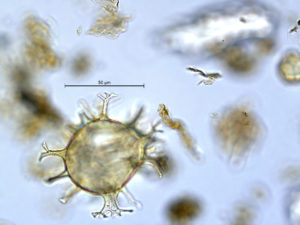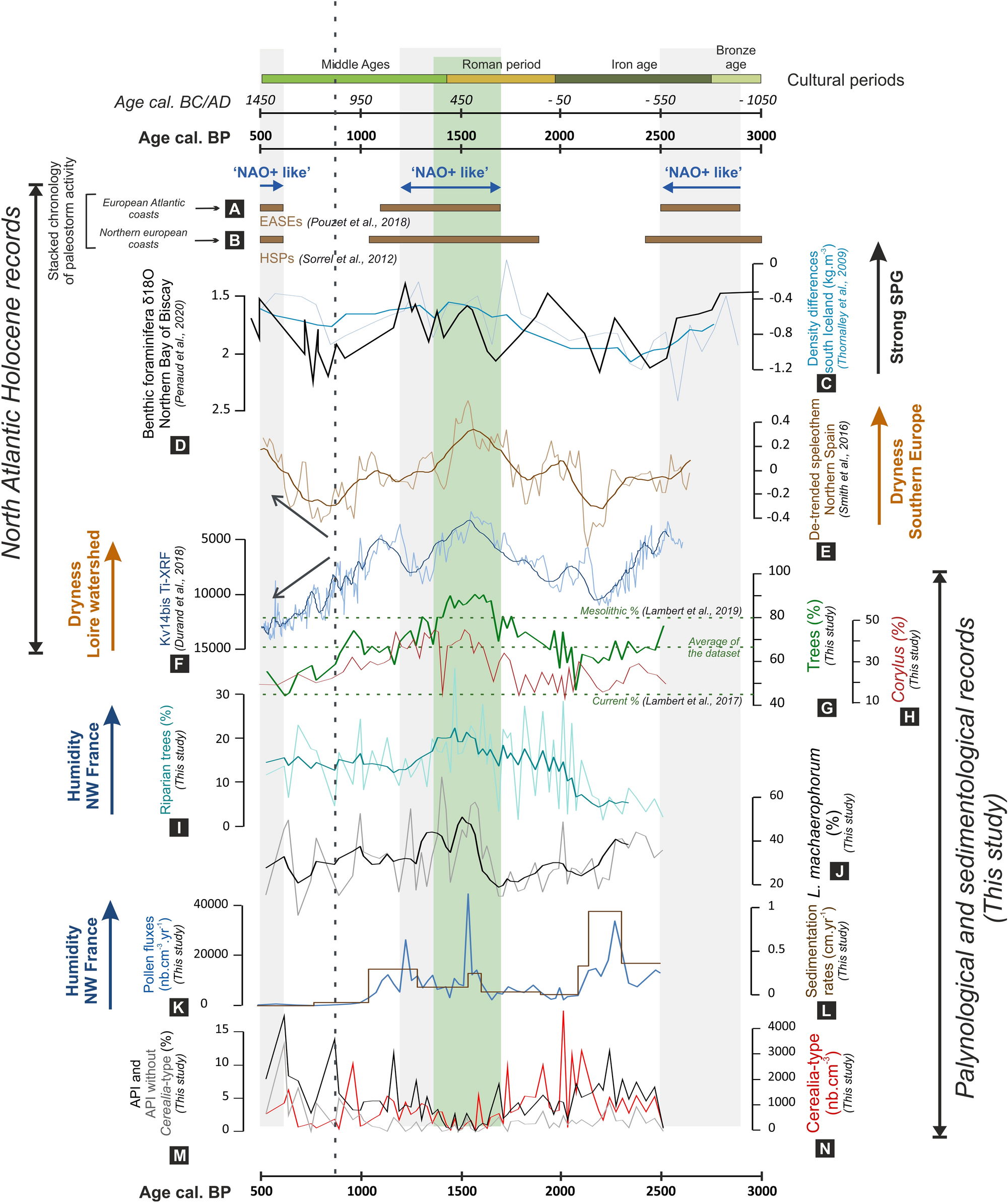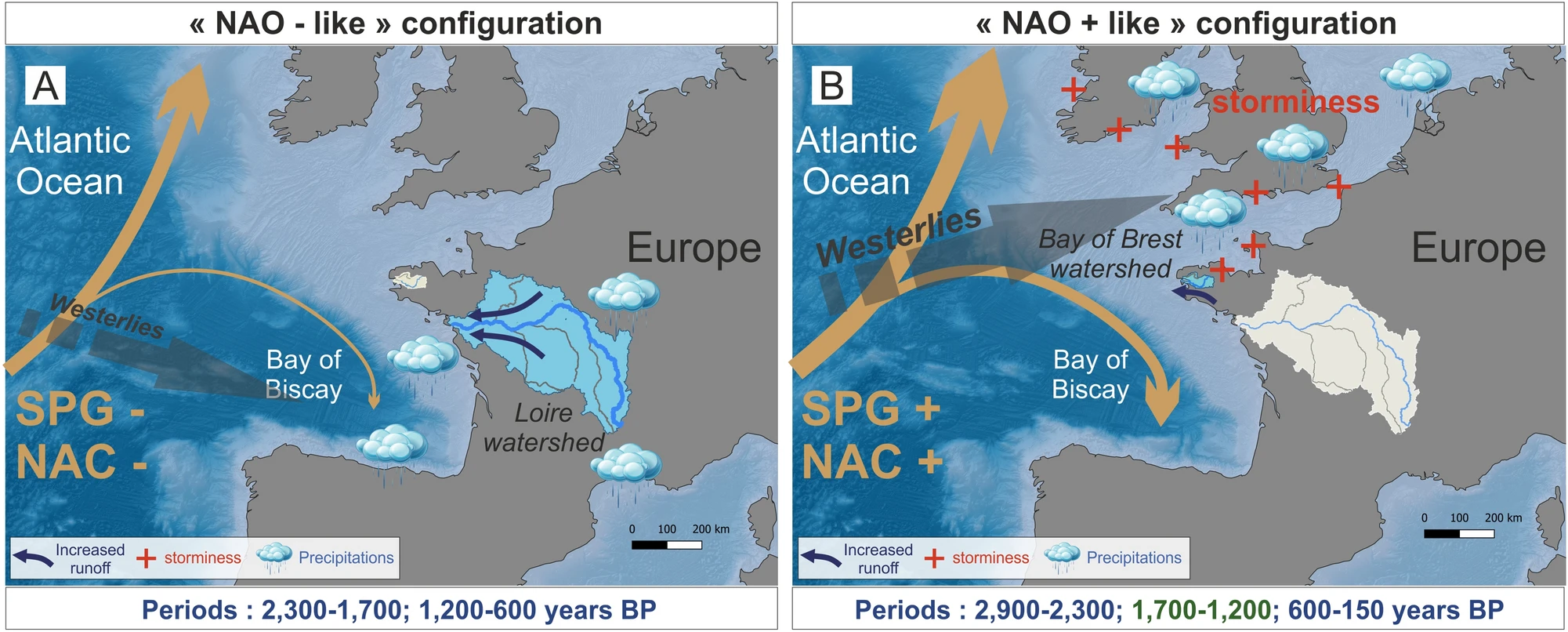
Clément Lambert
Associate Professor Paleoclimatology
Skills
Climate change
Environment quality
Micropaleonlotogy
Paleoclimates / Paleoenvironments
Palynology
Sedimentology
About
After a Ph.D. thesis focused on understanding the mechanisms and regional responses to climate variability, Clément Lambert works on the climate and environmental aspects of global change at different time scales. Concerning the "long-term" variability, the study period is the Quaternary, more precisely the Holocene, the interglacial period that began 11,700 years ago. Fossilized organisms resting in sediment (pollen and planktonic microalgae) during this period allow us to reconstruct climatic and environmental variations.
Regarding the recent period, the same tool allows the study of the evolution of littoral environmental quality, including pollution, eutrophication, and modifications of the physical and chemical properties of water. The comparison on this scale enables a discussion on human influence.
In coastal environments, the vulnerability of human societies to climatic hazards is particularly high, and anthropogenic pressures on ecosystems are increasingly strong. In this context, facing the dynamic occupation of territory by humankind, which is more pronounced, he also takes an interest in the relationship between society, climate, and the environment over time.
Interview: Environmental Scientist
WHAT IS YOUR CAREER PATH
I started with a Bachelor's degree in Earth and Environmental Sciences in Bordeaux. I continued with a Master's in Research in Oceanography, specializing in sedimentology and paleoclimatology. I then pursued a Ph.D. in Brest at the IUEM (European Institute of Marine Studies), focusing on reconstructing 10,000 years of climatic and environmental evolution in Brittany. I focused on understanding the regional environmental response to global climate changes, the causes of these evolutions, and their connections with human societies throughout history.
WHY DID YOU WANT TO BECOME AN ASSOCIATE PROFESSOR IN PALEOCLIMATOLOGY ?
It's a discovery, both in my Bachelor's and Master's studies. I was already aware of environmental issues and wanted to pursue a profession closely related to nature. The coast and the sea attracted me. My academic journey then allowed me to explore geosciences and climate sciences. During my research laboratory internship in my second year of Master's, I realized that the profession of a researcher was the one I wanted to pursue. This job gives me the opportunity to question the functioning of the world we live in and try to provide answers to the questions I have.
Teaching is also a pleasure, it's interesting and allows me to see something other than research. I believe that it is sometimes necessary to step out of the laboratories, that we have a significant role to play in sharing knowledge about climate change and environmental perturbation.
DOES A BETTER UNDERSTANDING OF PAST CLIMATE VARIATIONS HELP TO BETTER UNDERSTAND THE CURRENT ONES ?
Indeed, understanding the causes of past variations allows us to deepen our knowledge of the functioning of the climate system with a wider vision. Reconstructing the environmental impacts of past climate variations may eventually help envision the future consequences of climate change. Moreover, climate models that attempt to predict future climate variations are calibrated based on what we know about past climate variations.
ON WHAT TIME SCALE DO YOU WORK?
During my thesis, I worked on the last 10,000 years. I am interested in certain microfossils present in sediments (microalgae, pollen grains, etc.) to reconstruct past climatic and environmental variability. It is possible to work on different time scales using these same tools, ranging from the last few thousand years to much more recent periods, such as the last centuries or even decades. These short time scales were precisely the subject of an article published in 2018 in which we reconstructed environmental disturbances over the last 150 years: we were able to observe a change in the water quality in the Rade de Brest and changes in the structuring of phytoplankton communities. For instance, we were able to highlight the obvious influence of human activities and changes in land use on watersheds, leading to an increase in runoff and soil erosion from the 1950s. These changes result in an increase in nutrient inputs into the natural environment. All these reconstructions help us better understand the impact of our activities on the quality of environments.
DO YOU HAVE RESEARCH PROJECT ?
In the same axes, I wish to continue using microfossils present in sediment to reconstruct the climatic and environmental evolution at different time scales. Over the long term, I am interested in the relationship between human society and climate: the impact of climate change on past agricultural societies is, for example, a topic that occupies me and is the subject of an article published in 2020. In the shorter term (over the last centuries), among these microfossils, I am interested in toxic microalgae (called dinoflagellates), which represent a real societal issue and whose blooms we see increasing from year to year. I am, therefore, interested in what trigger them. I would like to reconstruct the evolution of the quantity and frequency of these toxic blooms over the last century to precisely understand the link between the development of these phytoplanktons and several environmental, climatic, and anthropic factors.

Kyste de dinoflagellé (une micro-algue phytoplanctonique) dont le nom d'espèce est Spiniferites bentorii. (Photo prise au microscope optique).

Graphique regroupant des séries de données paléoclimatiques et paléoenvironnementales (palynologiques et sédimentologiques) pour reconstituer la co-évolution Climat/Sociétés humaines au cours des derniers 3 000 ans. (Figure tirée de l'article Lambert et al., 2020).

Modèles conceptuels schématiques montrant la position des trajectoires des tempêtes, du Courant Nord-Atlantique (NAC) et du gyre Subpolaire (SPG) pendant les intervalles pluriséculaires (A) "NAO + like" et (B) "NAO- like" et l'influence associée sur les tempêtes et les modèles de précipitations sur l'Europe du Nord-Ouest. Les bassins versants en bleu représentent une augmentation des précipitations et du ruissellement. La carte a été créée à l'aide du logiciel QGIS version 3.4.5 (https://www.qgis.org).
Thalassa Report - "Morbihan : Un archipel en Bretagne"
April 10th 2019
https://www.facebook.com/lgo.ubs/videos/376911842903475/

